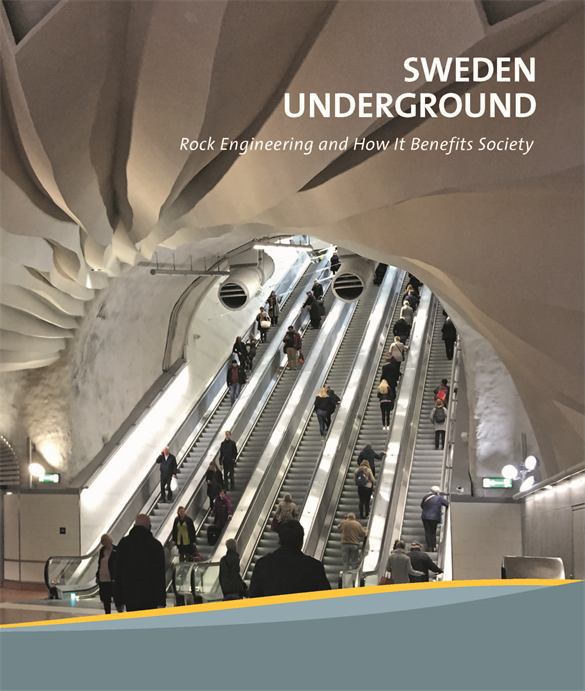Sweden underground : rock engineering and how It benefits society
Utgiven av:BeFo Rock Engineering Research Foundation and Swedish Rock Engineering Association
Competition for buildable land, not least in the centres of towns and cities, is intensifying. Experience has shown that many important functions in dense city centres can be placed in tunnels and rock caverns instead of building them on the surface. One common feature of underground facilities is that there is often little or no sign of them on the surface, thereby freeing up valuable land for other purposes such as buildings and parks.
The option of building underground applies not only to infrastructure, such as road and rail tunnels and wastewater treatment plants, but also facilities for other human activities and recreation, such as underground museums, cinemas, swimming pools and archives. These and many more examples of how the underground space can be used to benefit society are described in this book.
In an international perspective, Sweden holds a leading position in underground construction, with extensive experience of different types of project. The country has great expertise in rock engineering and a cutting-edge manufacturing industry that serves the sector, and conducts world-leading research. The book contains many examples.
One important target group is planners and decision-makers who wish to learn more about the subject and discover the potential of underground construction. However, the text has been deliberately pitched at a level to make the content easily accessible and comprehensible for a broad audience, not just for specialists.
The book is divided into six chapters as follows:
Chapter 1 describes common motives for placing facilities in tunnels and rock caverns, and the favourable geological conditions for underground construction in Sweden.
Chapter 2 considers planning issues and legal aspects of underground construction.
Chapter 3 describes technological aspects of rock construction.
Chapter 4 contains descriptions of over 30 rock facilities in Sweden, including why and how they were built. Most are in operation, but some of the projects are still in the planning stage.
Chapter 5 presents the latest research and development in rock engineering, conducted at leading universities and research institutes in Sweden.
Chapter 6 looks to the future, and describes some conceivable underground projects in Sweden. Some have even reached the planning stage, while others are more visionary in character.
The book is the result of a collaboration between the Rock Engineering Research Foundation (BeFo), the Swedish Rock Engineering Association, the Swedish Transport Administration (Trafikverket), the Swedish Nuclear Fuel and Waste Management Company (SKB), the J. Gust. Richert Memorial Foundation, and professionals who contributed on a volunteer basis.
Our hope is that the book will increase understanding of the potential of tunnels and rock caverns in
resolving societal challenges, and of how the rock under our feet can be a valuable resource in urban construction.






